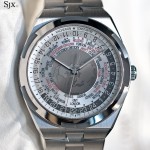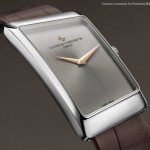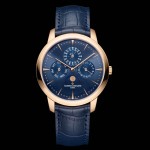Hands On: Vacheron Constantin Tribute to The Quest of Time
An elegantly figurative, astronomical complication.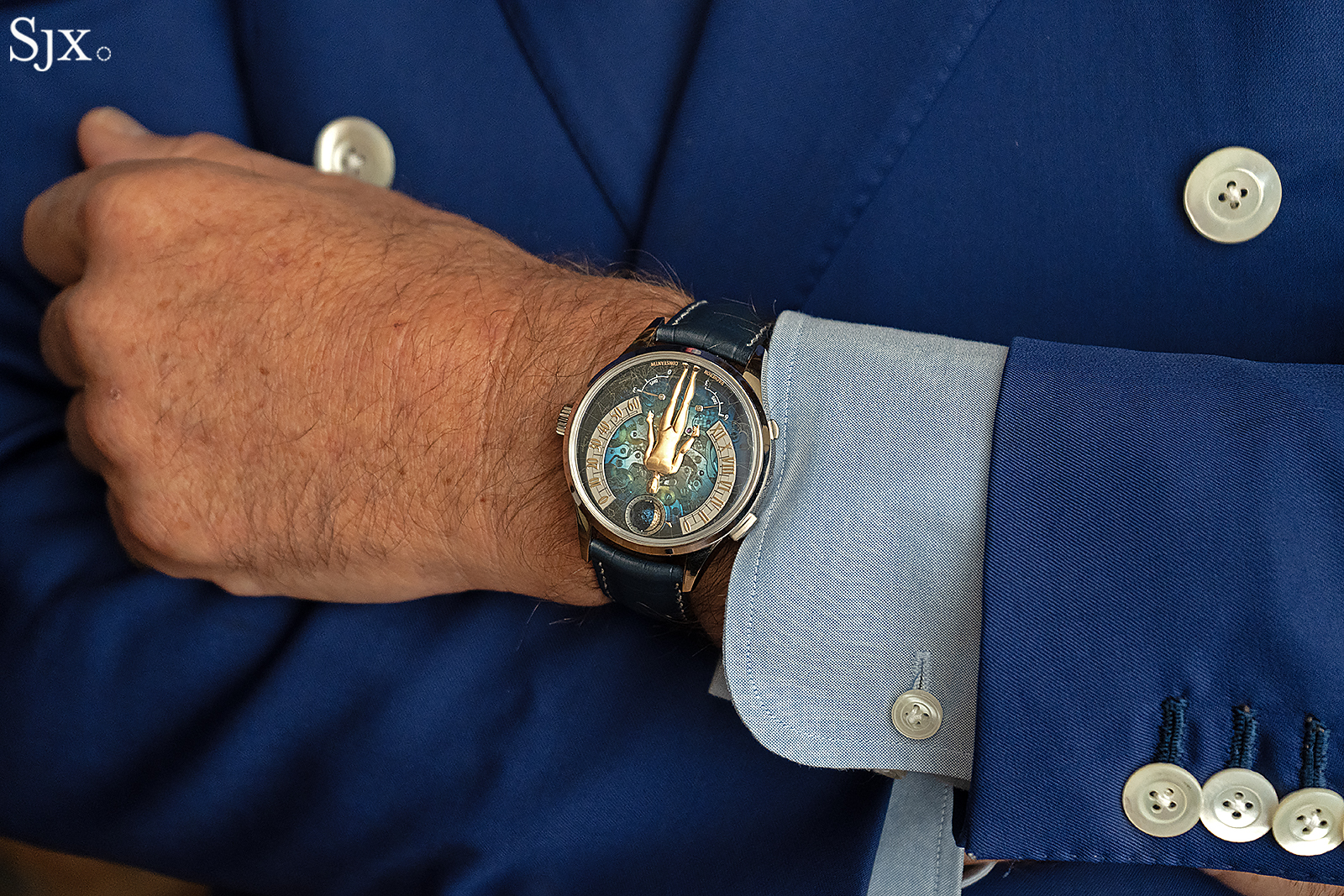
Vacheron Constantin (VC) marks its 270th anniversary this year in grand style with La Quête Du Temps, a monumental, multi-complication clock weighing over 150 kg. A little more wearable is the Métiers d’Art Tribute to The Quest of Time, also a 270th anniversary edition but in wristwatch format.
Like many of VC’s high complicated watches, Tribute to the Quest of Time is a double-faced wristwatch. On the front is a double retrograde time display that’s either on demand or en passant, which takes the form of a human figure whose arms tell the time. Also on the front is a spherical moon phase, while the back is home to an astronomical display comprising a sky chart and sidereal day indicator.
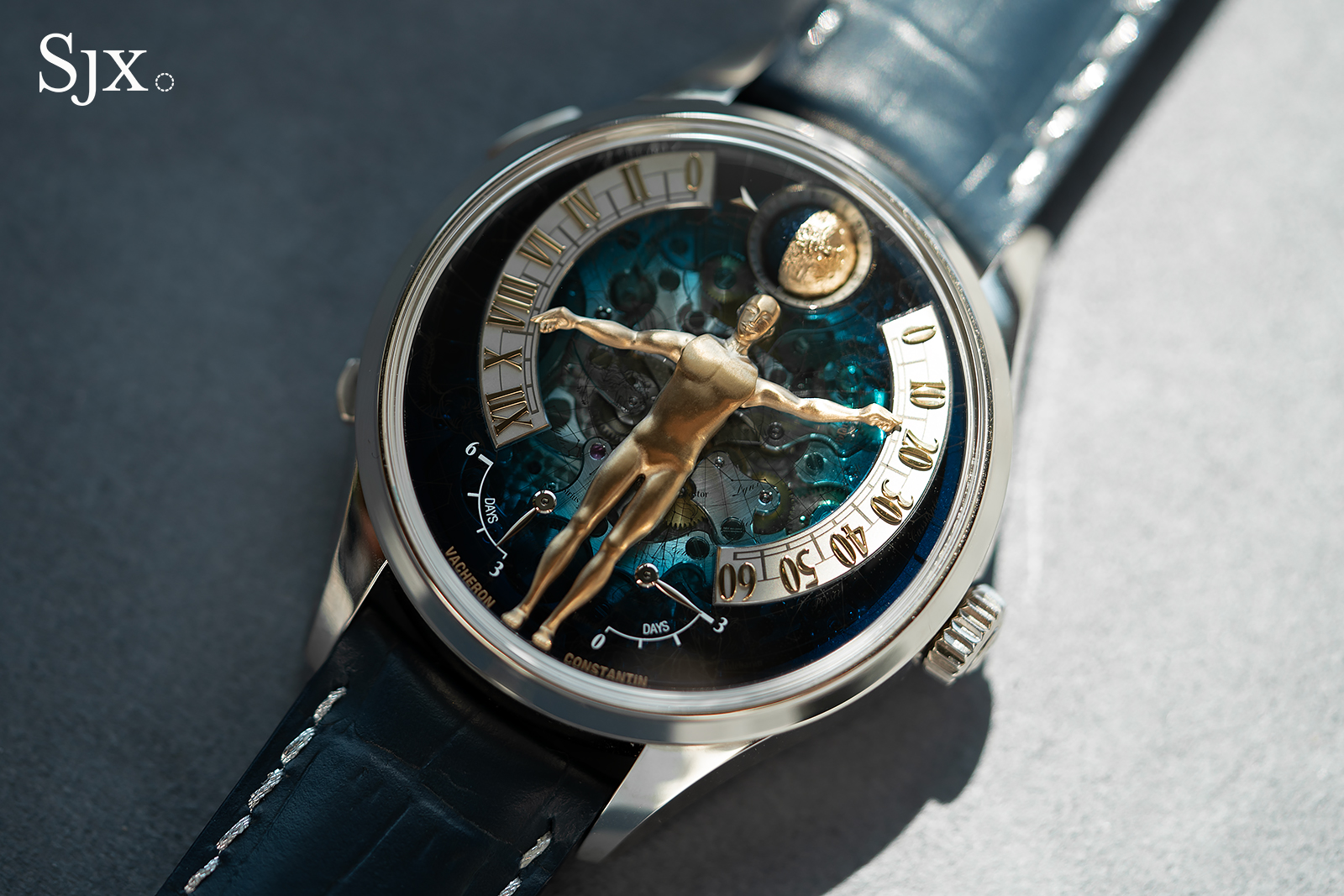
Initial thoughts
Tribute to the Quest of Time is a big complicated watch, and it looks and feels the part. In terms of dimensions and feel, it reminds me a little of the Lange Repeater Perpetual Calendar that was also launched this year. Even though small watches are on trend now, complicated watches like this should be large. This succeeds in that respect, and feels good on the wrist.
Despite the mechanical complexity, the time is easy to read, though it takes a moment to get used to the twin scales for the time. The symmetrical dial on the front is straightforward and legible.
The dial is tinted sapphire and etched with the constellations in the night sky over Geneva on the day VC was established, September 17, 1755. This is not obvious at a distance but reveals itself up close. This leaves the constellations superimposed over the under-dial mechanism for an appealing visual effect.
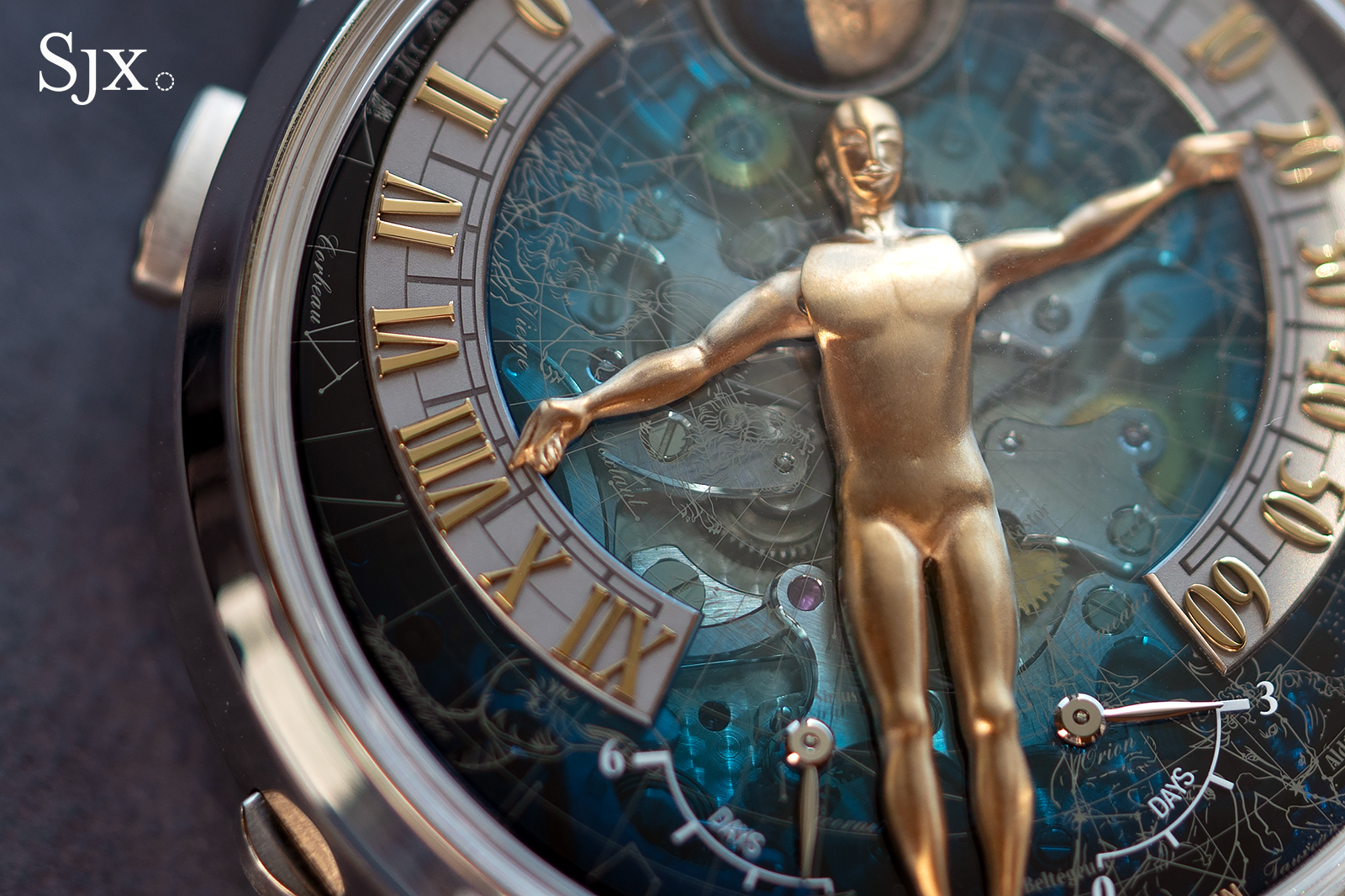
The back is equally straightforward but more difficult to understand as some knowledge of astronomy is required to decipher (and also set) the sky chart display. But whether or not you understand the sky chart, it looks cool, especially suspended over the movement.
The cal. 3670 is only partially visible through the back, but worth a second look. For one, the movement decoration is evidently better than VC’s run-of-the-mill watches, as it should be.
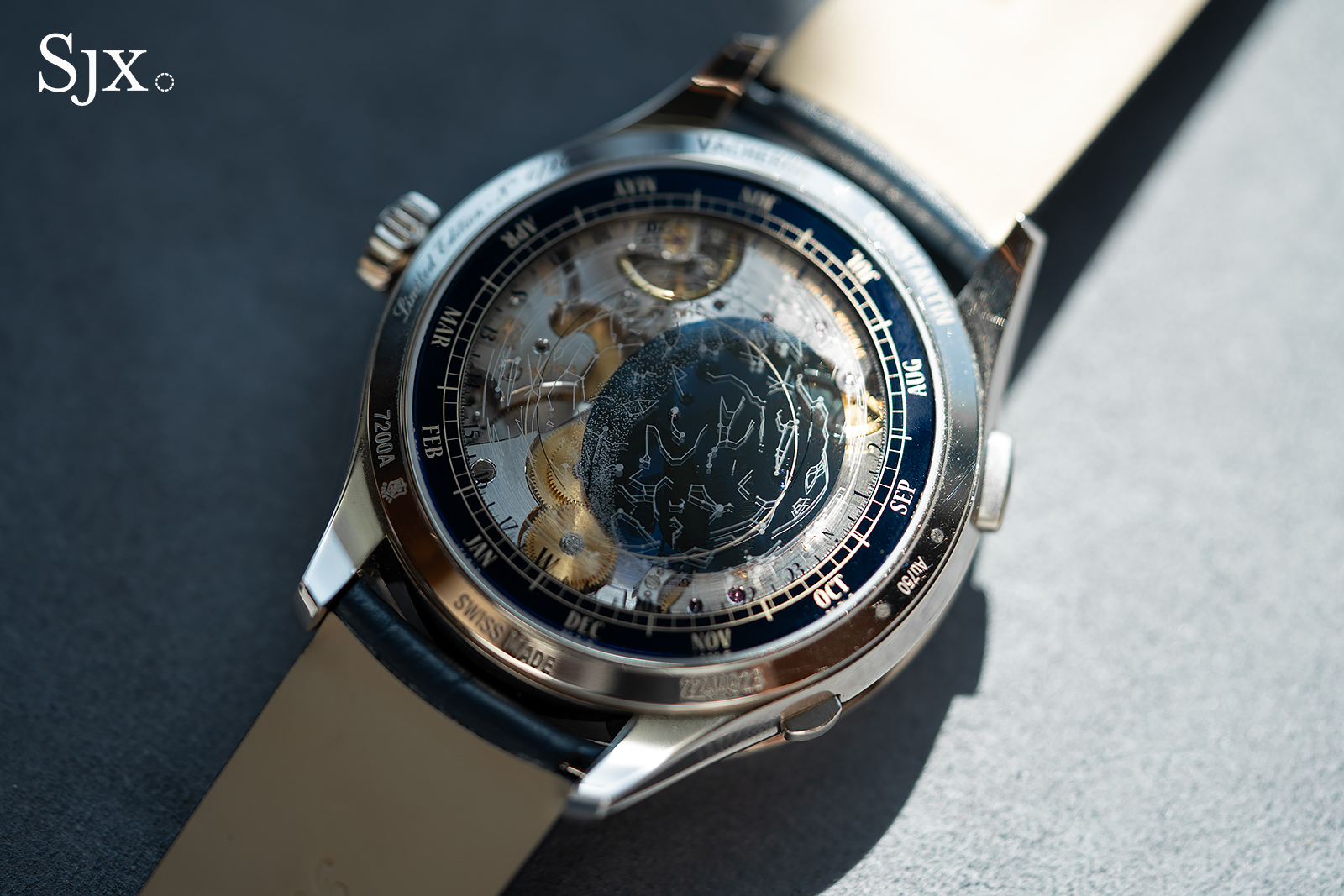
And besides the obvious complications, the cal. 3670 is also an interesting construction. It’s a large calibre with a six-day power reserve and a high-frequency balance running at 36,000 beats per hour (5 Hz). Together they are an unusual combination of features but make for a logical pairing in terms of chronometry, especially for an energy-intensive set of functions like these.
Overall, I like the Tribute to the Quest of Time, and I rate it highly in terms of mechanics and execution. Beyond the tangible appeal, this has the appeal of rarity as it’s a limited edition of just 20 pieces, a small run even in the rarefied world of such timepieces. It does cost over CHF400,000, which is substantial, but not outrageous in today’s market that is richly valued.

Time-telling hands
Pocket watches with a figure indicating the time with its arms date as far back as the late 18th century, and a little bit further back for clocks. Various makers produced such watches, known as bras en l’air, French for “arms in the air”, but VC made it something of a specialty starting in the late 1920s. With the help of a Le Locle specialist, VC produced a series of bras en l’air watches and movements, both under its own name and for others, most notably Paris jeweller Verger Frères. The dial motifs were diverse, ranging from a snake charmer to an eagle.
These bras en l’air watches contained on-demand, bi-retrograde displays. One arm indicated the minutes, and the other, the hours, each on a retrograde scale. But these were strictly on demand – depressing a pusher on the case band or crown caused the arms to jump to show the time, and then releasing the pusher sent the hands back to the zero position.
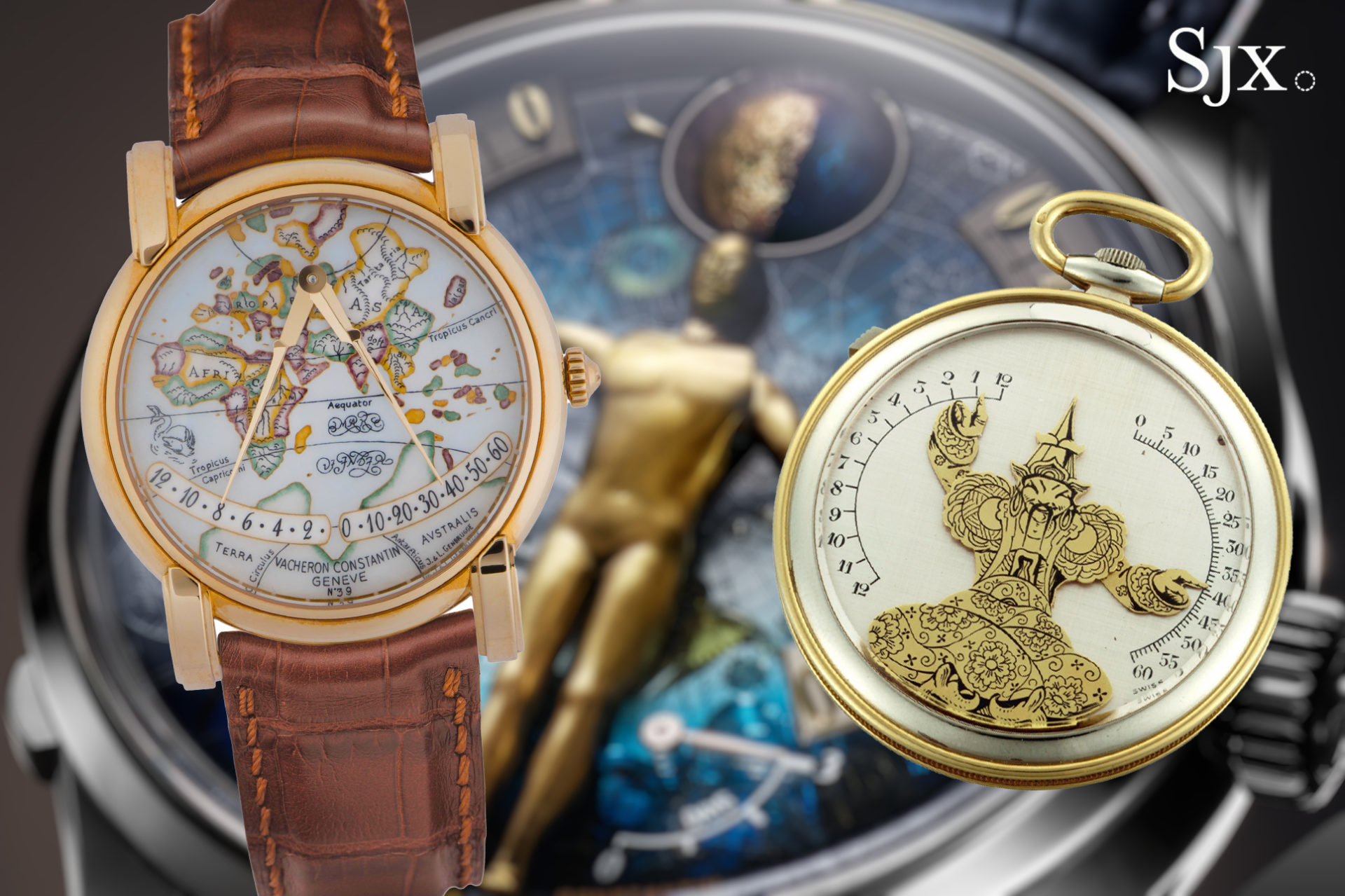
The Mercator (left), and a 1930 bras en l’air pocket watch made for Verger Frères. Images – Vacheron Constantin
Bras en l’air watches went out of fashion by the 1940s, and VC only returned to the bi-retrograde concept in 1994 with the Mercator. Inspired by historical maps, the Mercator indicated the time with a pair of retrograde hands, continuously and without an on-demand function.
The Tribute to The Quest of Time is the ultimate evolution of the concept. It is a bi-retrograde time display that is both on demand an en passant. In other words, the display can be reset to zero with the push of a button, placing the arms by the figure’s sides, or left to run to show the time as it passes. The combination of the two display types, on-demand and en passant, makes the Tribute more complex than either of its historical predecessors.

The time display is straightforward and legible, though the format takes some getting used to. Hours are indicated on the leftmost scale with Roman numerals, while minutes are in Arabic numerals on the right. The figure, christened “The Astronomer”, indicates the time with both its hands.
Both the scales and numerals are solid 18k gold – the scales are white gold while the numerals are yellow gold. But the Astronomer is in gold-coated titanium; the motion of both arms require maximum lightness hence the choice of material.
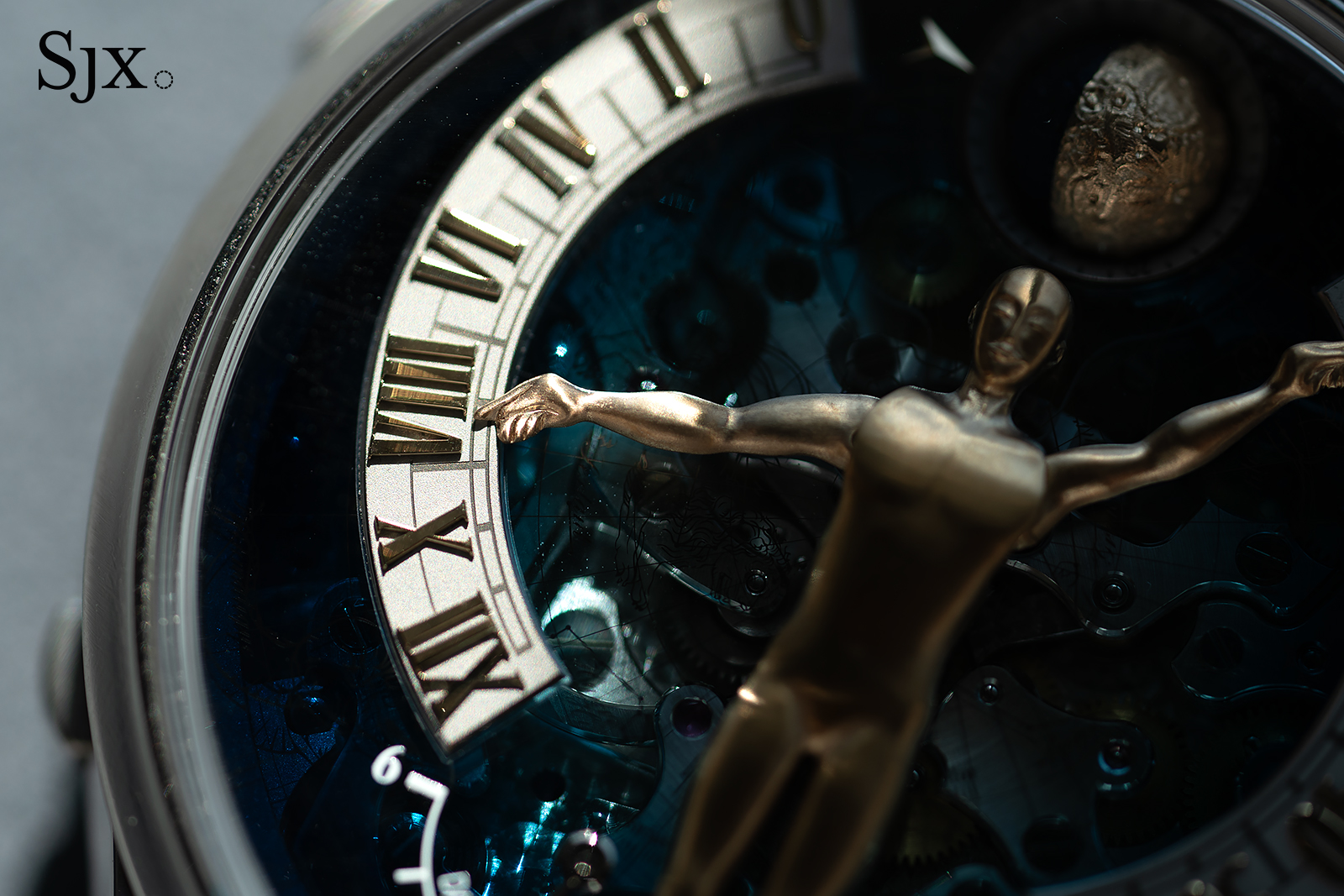
Similarly, the spherical moon is also titanium made up of two halves: one half is hand engraved and gold-plated while the other is coated blue. Both halves, however, are hand engraved to create a “cratered” finish modelled on the actual lunar surface.
The moon phase display has a conventional accuracy of one day in 122.5 years, so it is more performative than a substantial complication. I don’t think it is a weakness, but a more complex astronomical display, like an equation of time or ultra-accurate moon phase of the one-day-in-1,000-years type, would be a bonus.
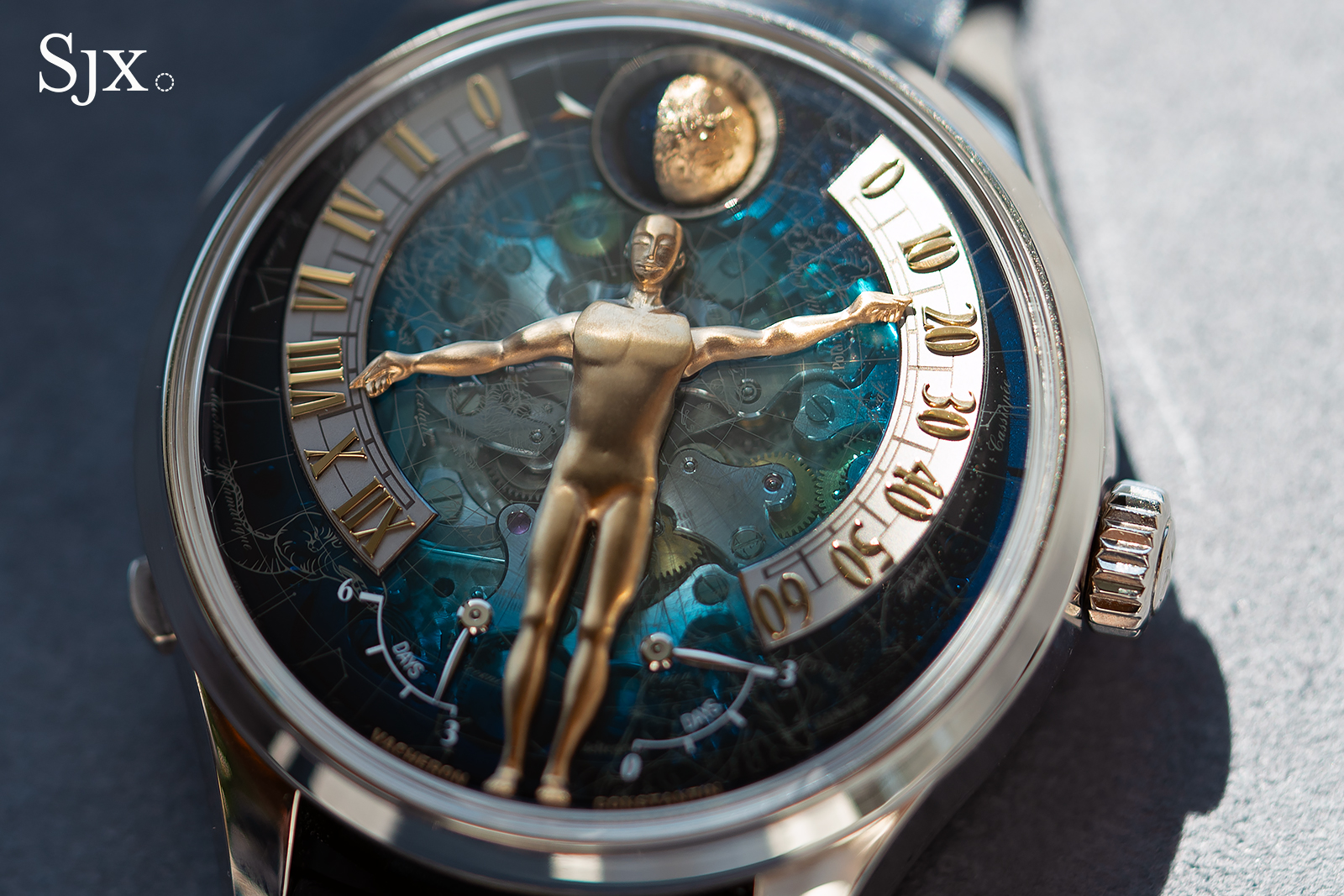
On either side of the figure’s legs are the power reserve displays. Though they are separate, the two displays run sequentially to indicate the total power reserve of the watch. Functionally, the two scales offer the same information as a single conventional display, but here they serve to preserve the symmetry of the dial.
The righthand indicator shows the first three days of power reserve, and the lefthand displays the balance of three days. As the movement winds down, the lefthand indicator drops to “3”, followed by the righthand display going to “0”.
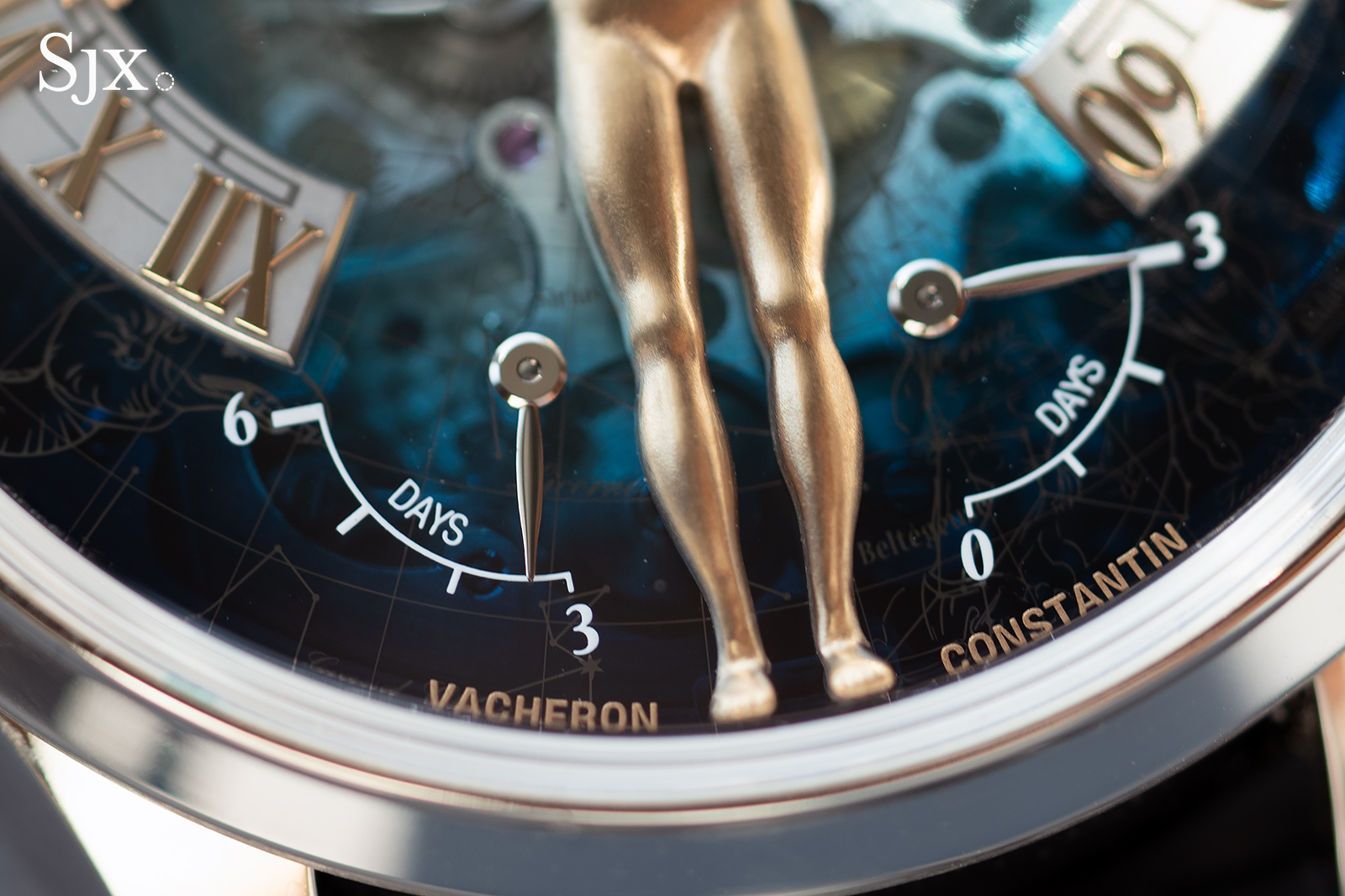
The backdrop for the elaborate display is a tinted sapphire dial that is clear in the centre and gradually darker blue towards its edges. Though not evident initially, the dial bears a “celestial vault”, essentially a star chart that reproduces the night sky over Geneva on September 17, 1755, the day VC was founded. (Or more specifically, the date Jean-Marc Vacheron hired his first apprentice watchmaker; the “Vacheron et Constantin” was formally established in 1819.)
The star chart is the result of metallisation – a chemical process that deposits metal vapour onto the underside of the sapphire dial to create the motif. The same technique is used for the gradient blue finish.
Notably, the sapphire dial is actually two pieces of sapphire superimposed one on top of the other. The upper dial carries the metallised finish on its underside, while the lower dial is clear and simply serves to protect the metallised decoration, which might otherwise be damaged during servicing when the dial is removed.
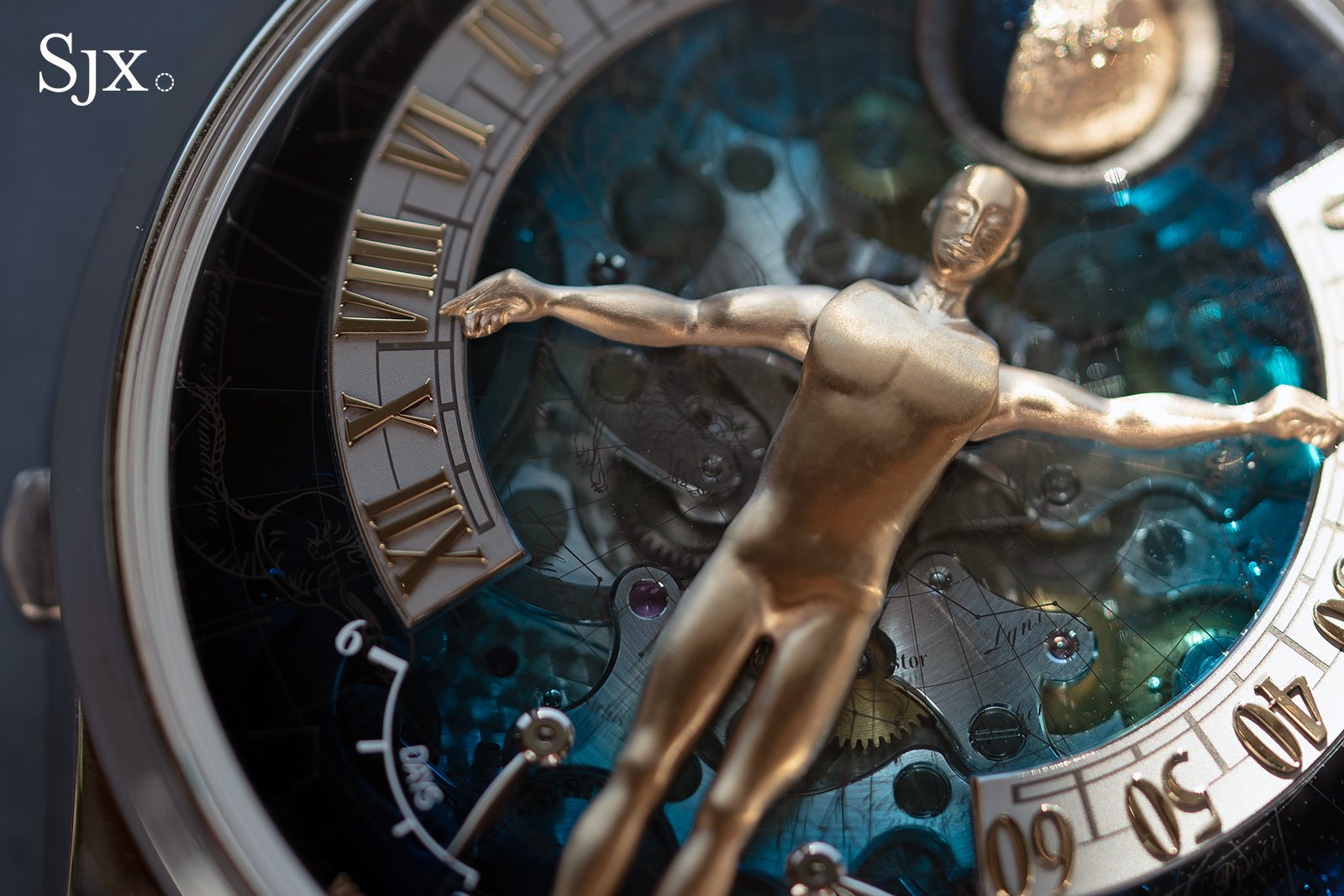
Even though the tinted finish of the dial obscures the edges of the under-dial works, much of the mechanism that drives the time display is visible. Under magnification, the movement reveals a high standard of decoration that is finer than that found on the average VC movement – as is expected given the price and limited number of the Tribute.
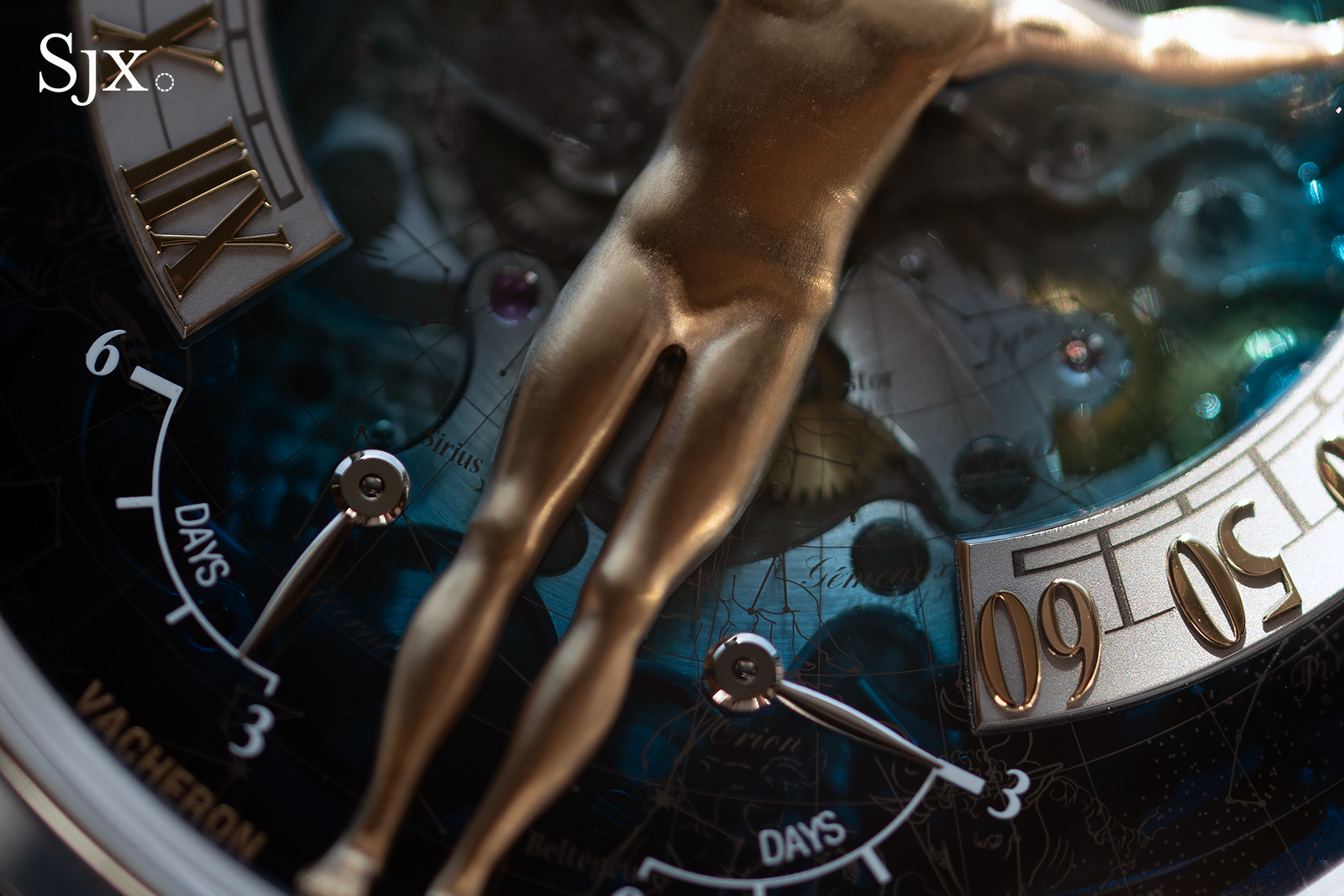
Novel presentation
The Tribute to the Quest of Time has a unique case design to match the movement. The watch employs a case that is distinct from those found in the regular production line-up (think Traditionelle, Patrimony, and so on), though a similar but not identical case design can be found on some Les Cabinotiers watches.
The white gold case is simple in form, with flared flanks and a sloped bezel that actually make the watch look larger than it is. And it is already a large watch at 43 mm in diameter and almost 14 mm thick.
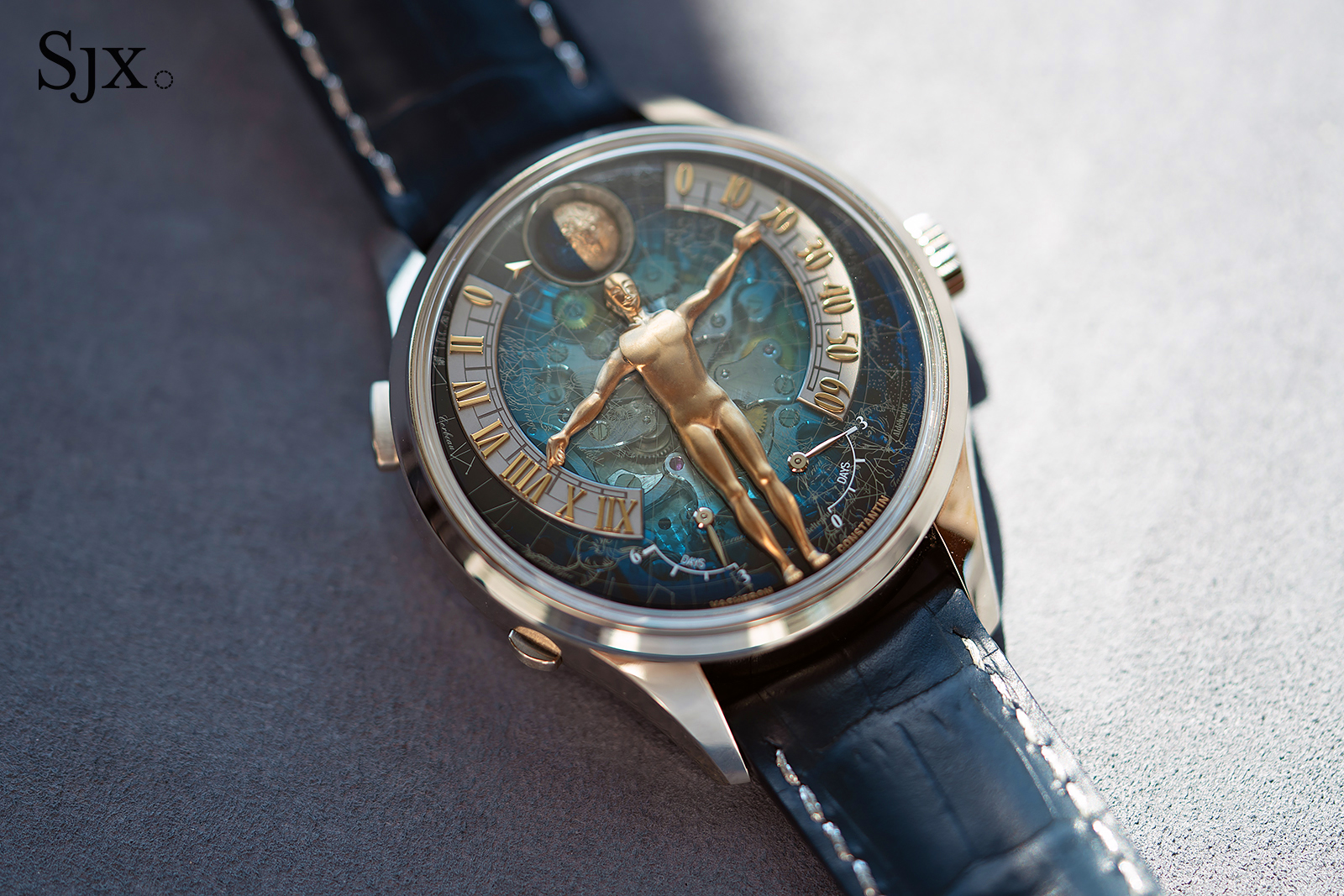
This is either a pro or a con depending on how much you like the size. I think the case works well, though if I had free rein, I’d dress up the case with gem setting or engraving (which I am also sure VC will do at a price).
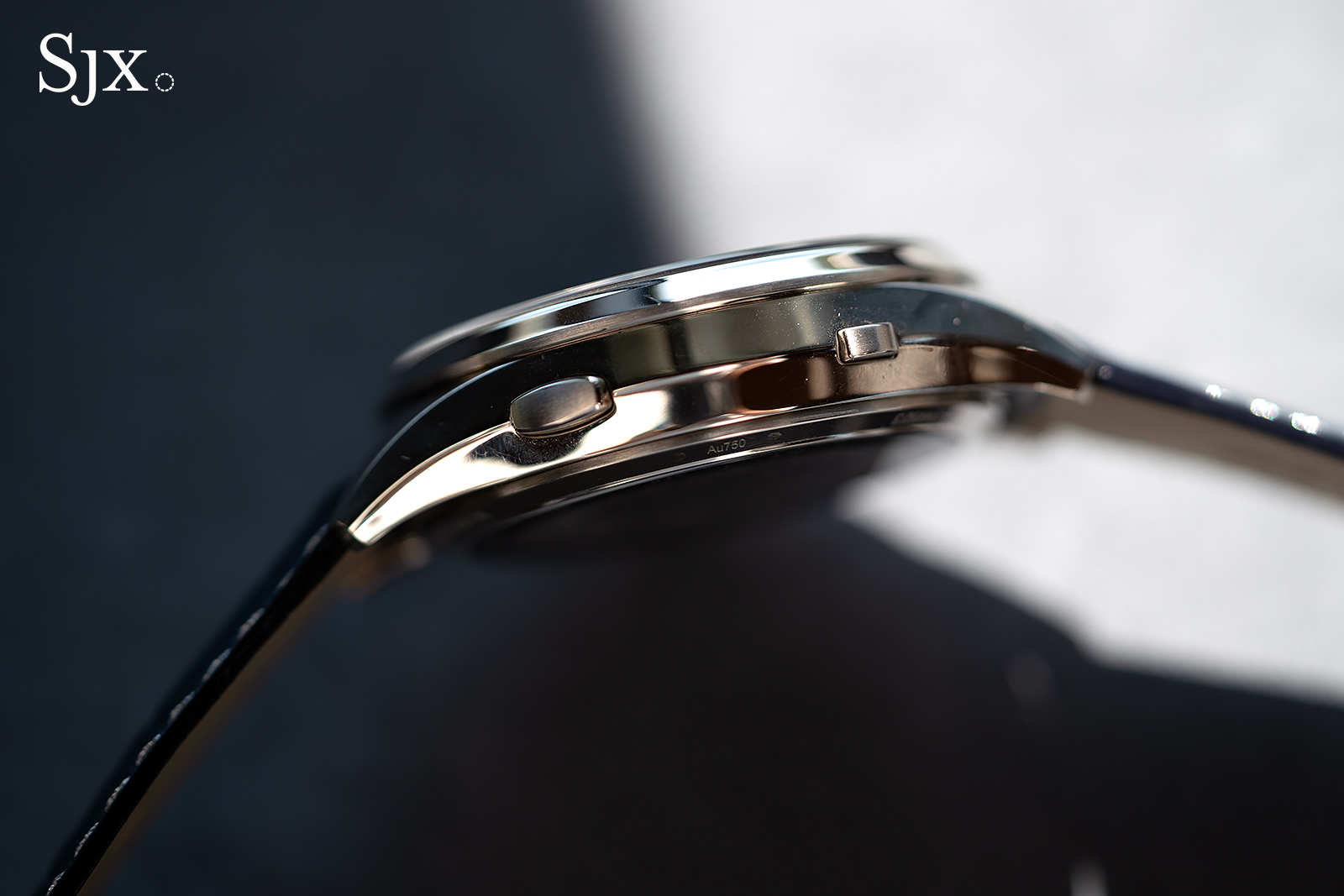
One astronomer, two hands, three barrels
In the tradition of complicated astronomical watches, the Tribute is a double-faced watch. The back reveals both the movement and a sky chart, along with a sidereal day indicator on a scale around the movement marked with dates and months.
The sky chart shows the night sky and constellations as seen from Geneva, though it can presumably be customised to the owner’s location as is usually the case for this complication. According to VC, the sky chart will accumulate a day’s error only after 9,130 years.
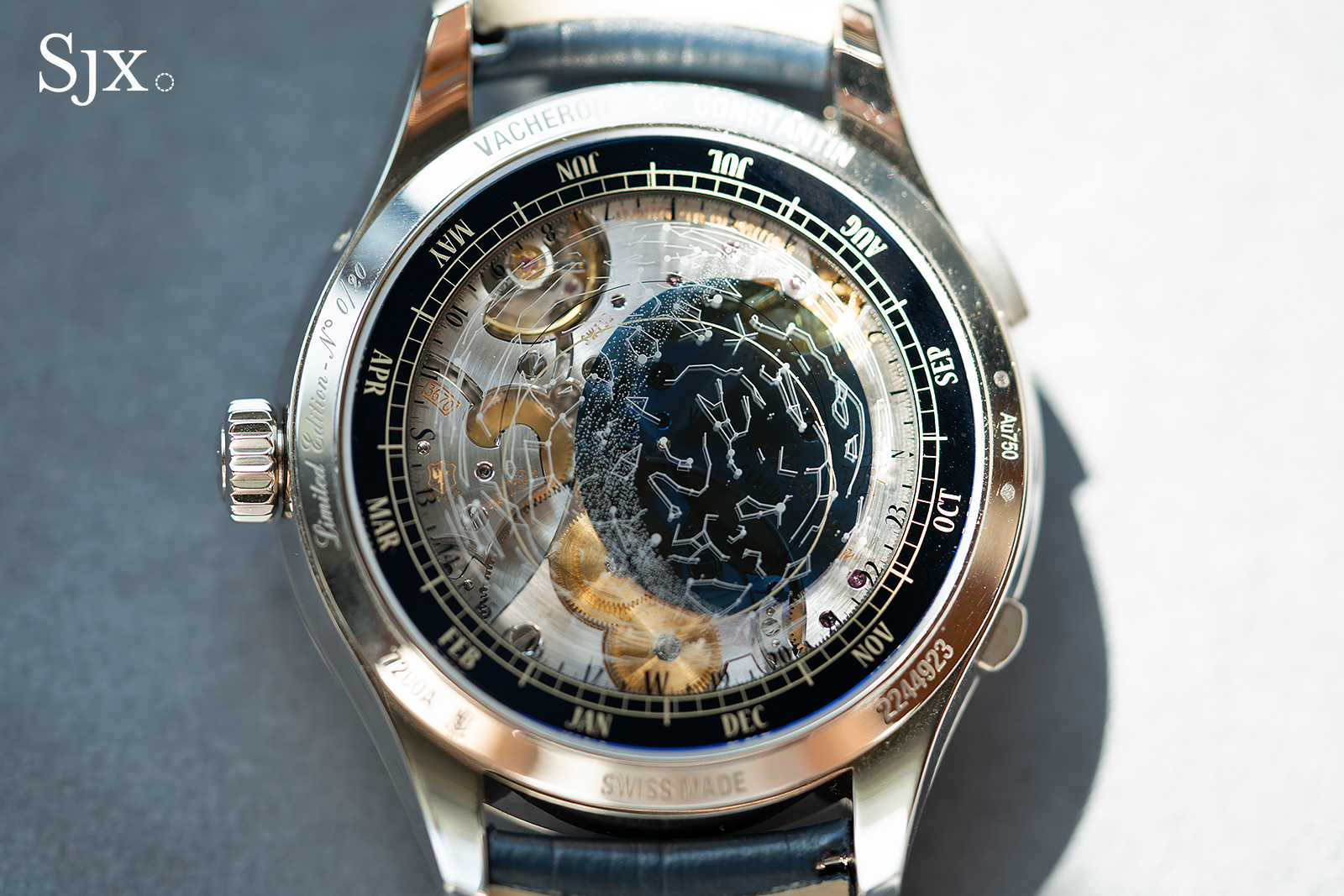
Below the sky chart display is the cal. 3670. VC borrowed from the architecture of the innovative Twin Beat of 2019 (that had twin barrels and twin going trains) for the cal. 3670 (that has a single going train). The movement explains the size of the watch; the calibre is large to accommodate three barrels that give it a six day power reserve and optimal amplitude throughout – that’s six days even with the retrograde display running.
Moreover, the movement beats at 36,000 beats per hour, or 5 Hz, which is regarded as high frequency and unusual for this type of highly complicated watch. The high beat balance helps to maintain amplitude over the long power reserve. And the long power reserve is even more of an achievement with the retrograde display and balance, both of which are energy-intensive.
The sky chart covers part of the movement, which is a shame as it’s a good looking movement. It has the typical layout of a calibre with a long power reserve, namely oversized barrels plus a comparatively small balance wheel. Though the size of the balance would ordinarily mean its inertia is lower, the high frequency of its oscillation compensates. The combination of large mainsprings and a small, but high beat, balance promises good chronometry over time.
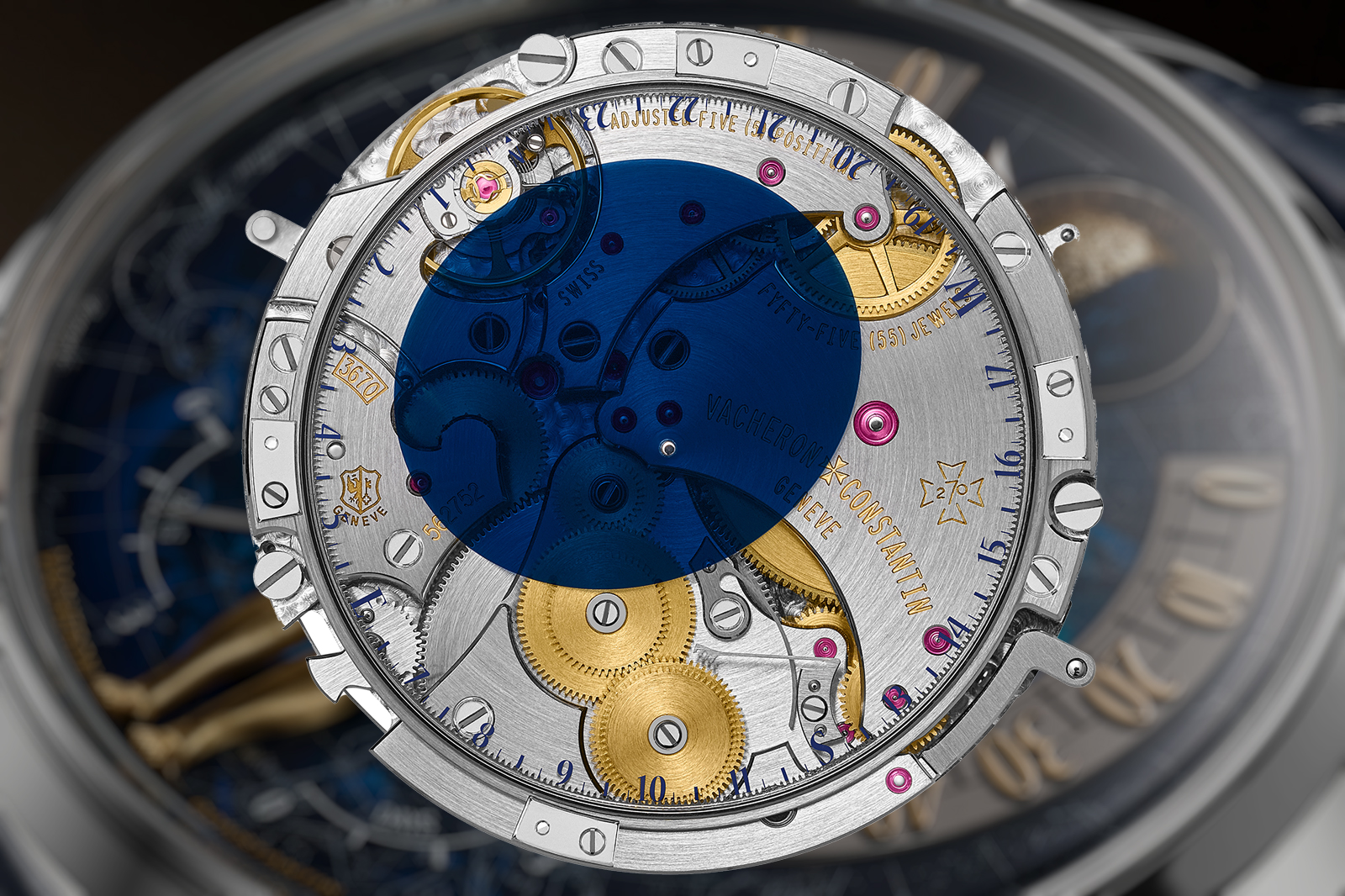
The movement as seen from the back. Image – Vacheron Constantin
Another notable element of the construction is the barrel arrangement. Two larger barrels are stacked, and power most of the movement, including timekeeping, sky chart, and moon orb. The single, adjacent barrel is slightly smaller in diameter, and is responsible only for the retrograde time display. This division-of-labour approach is a common, historical solution to energy intensive complications that are constantly running, including the grande et petite sonnerie.
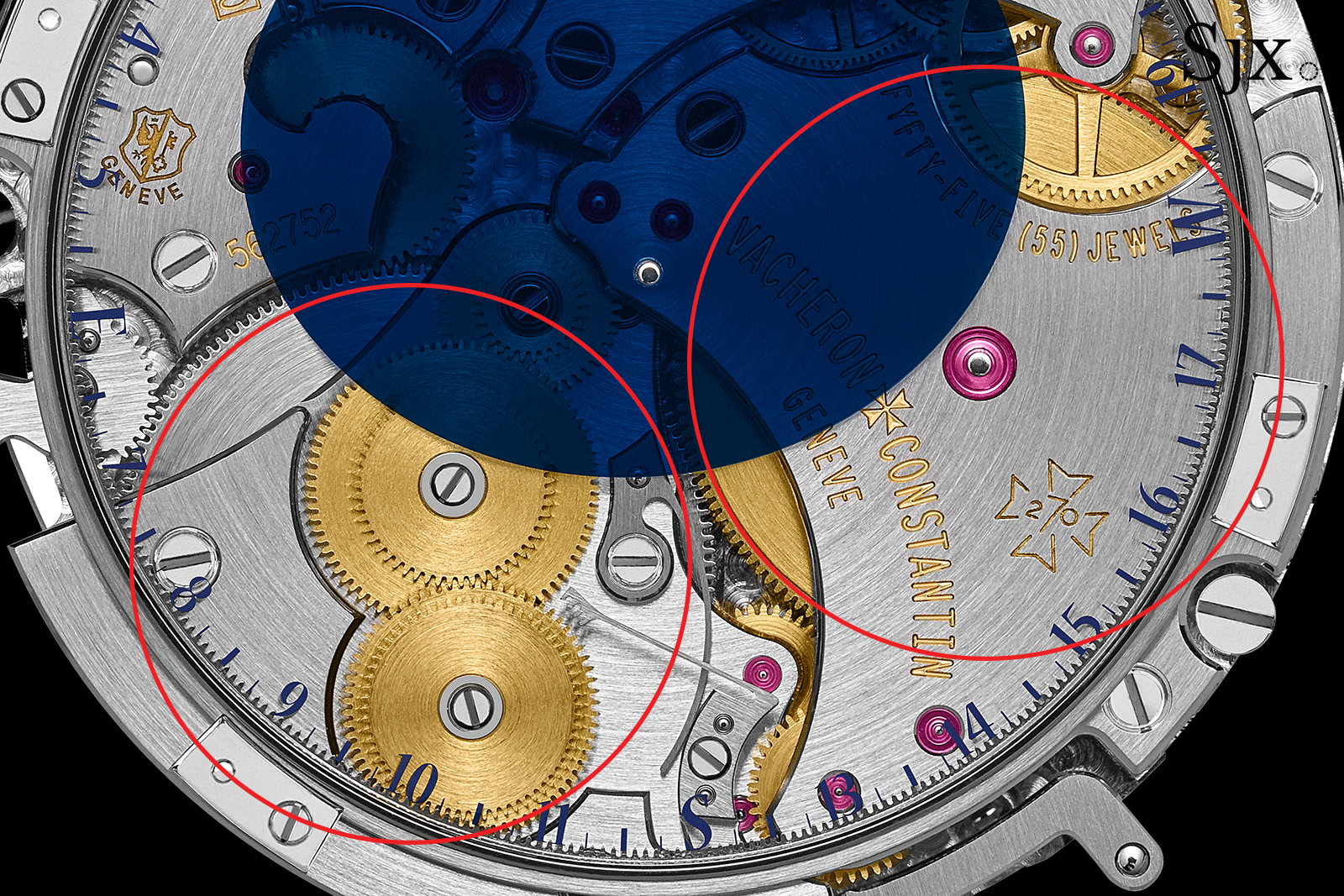
The three barrels, one on its own and the pair stacked. Image – Vacheron Constantin
The movement architecture also evokes classical pocket watch movements with the flowing outlines of the bridges, which incorporate enough corners and sharp points to satisfy the finishing fanatics.
The decoration is excellent, though seemingly simple on its face. This is largely due to the circular graining on the flat surfaces of the bridges, a motif found across the brand’s movements inside the 270th anniversary watches. Inspired by similar decoration on historical pocket watches, the grained finish doesn’t have the brightness of Cotes de Geneve or baroque style of engraving, but it done well. And the decoration is also applied by hand according to VC, though presumably with a mechanical tool.
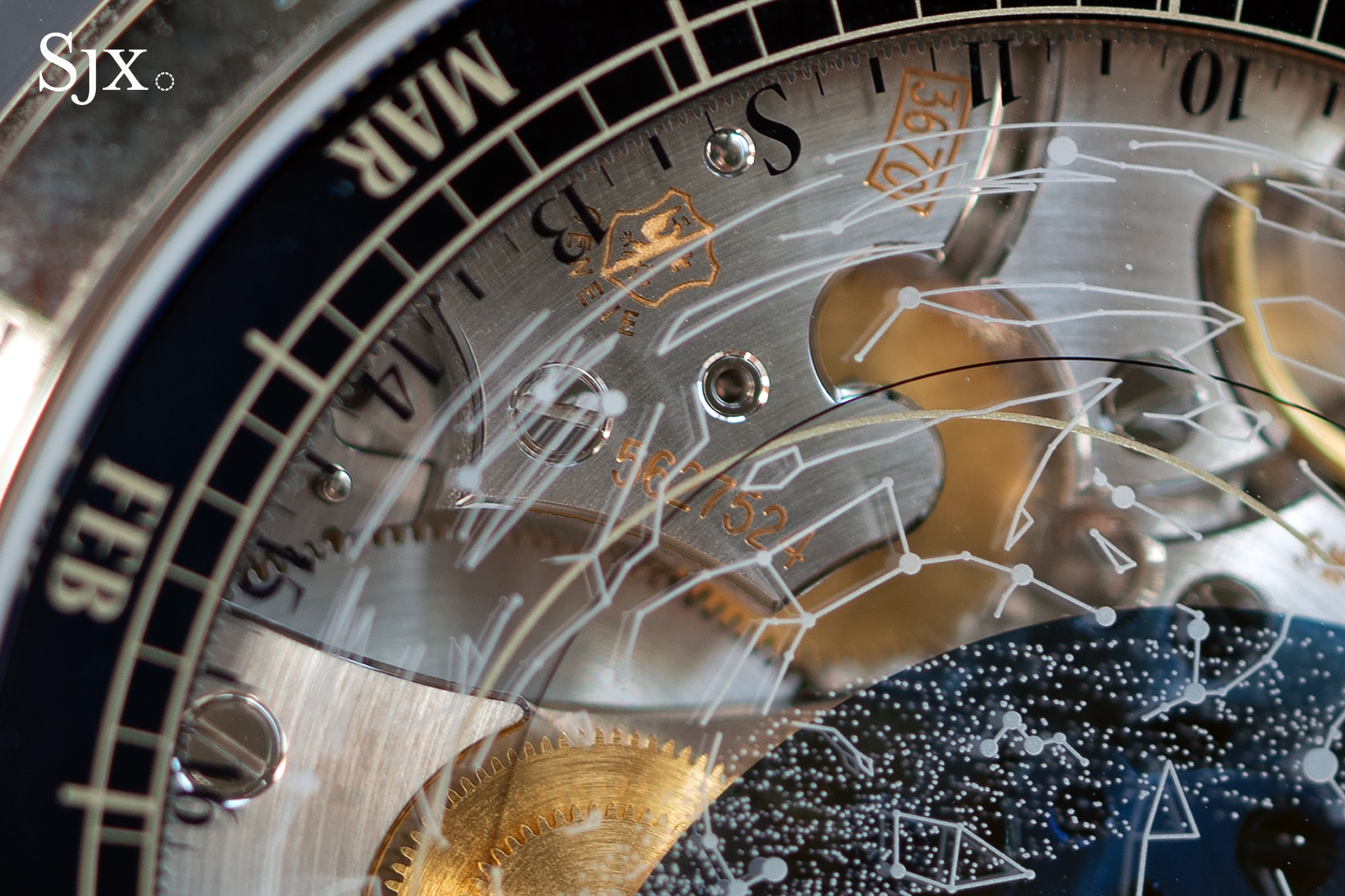
The architecture of the movement with its long power reserve, and presumably robust torque to support energy-intensive complications, makes it an interesting platform for future calibres. I am sure that the team at VC likely has the same thought, so I expect to see more notable movements based on this construction in the future.
Key facts and price
Vacheron Constantin Métiers d’Art “Tribute to The Quest of Time”
Ref. 7200A-000G-H103
Diameter: 43 mm
Height: 13.58 mm
Material: 18k white gold
Crystal: Sapphire
Water resistance: 30 m
Movement: Cal. 3670
Functions: Retrograde hours and minutes (en passant or on-demand), moon phase, sky chart, sidereal day, and power reserve
Winding: Hand wind
Frequency: 36,000 beats per hour (5 Hz)
Power reserve: 144 hours
Strap: Alligator with matching folding clasp
Limited edition: 20 pieces
Availability: Only at Vacheron Constantin boutiques
Price: Approximately CHF400,000
For more information, visit vacheron-constantin.com.
Back to top.


